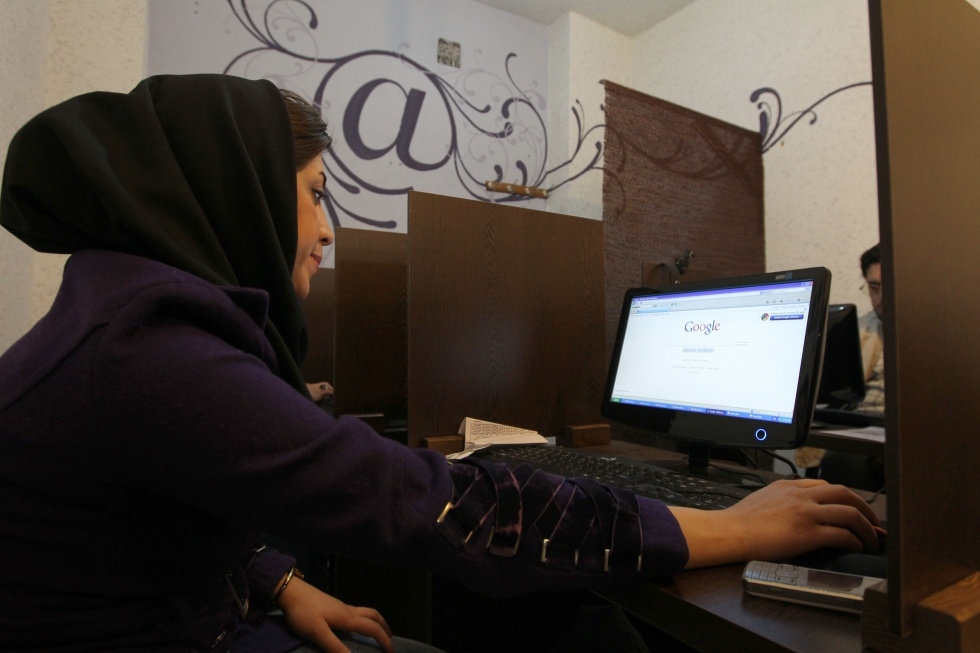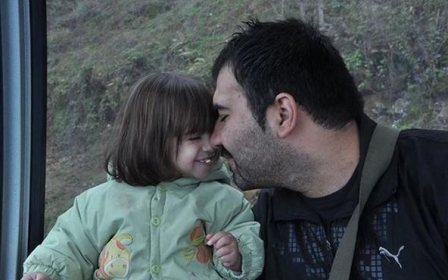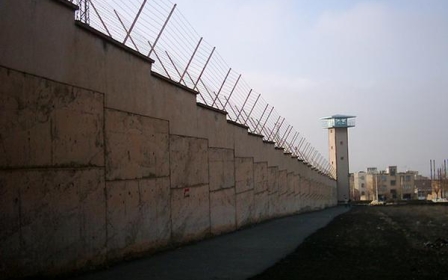Clicks, clerics and censorship - Iran’s battle with the internet

Much has been made about Hassan Rouhani becoming the first Iranian president to use Twitter, with worldwide reactions ranging from scepticism to encouragement and support. Even though Twitter has not verified the account, which allows for users to easily find people or credible sources, Rouhani’s English account still boasts more than 273,000 followers.
Despite the fact that Rouhani has admitted to journalists at this year’s World Economic Forum in Davos that he does not personally tweet and that the Twitter account is managed by “friends”, he has been challenged recently by both the CEO and chairman of Twitter, Dick Costolo and Jack Dorsey respectively, on not granting access to Twitter to Iran’s population. In a CNN interview with Christiane Amanpour in October, he stated with regards to Twitter use: “We have not yet reached a point in which we feel completely comfortable in what our people voted for during the election. Our people realise that in such matters we must have coordination with other branches of the government - the judiciary, parliament, and legislation.”
The estimated number of internet users in Iran is highly contested. Official statistics from the government are exaggerated and inconsistent, with different Information and Communications Technology (ICT) indicators placing the figures between 21 percent to 39 percent at the end of 2011. The International Telecommunication Union has estimated the number to be around 31.4 percent for 2013-2014.
Censorship, proxies, VPNs
In the 1990s, the advent of the internet was limited to the private sector that utilised it for technological and scientific growth. Under Khatami’s presidency, the government expanded the internet infrastructure, while simultaneously closing in on freedom of expression online. The 2009 Green Movement – a series of protests that demonstrated against what they saw as the rigged re-election of Ahmadinejad as president – highlighted the use of the internet in Iran, which was credited by catchy western headlines as a “Twitter revolution”. It was made clear in the aftermath that social networking sites were used as a tool for bridging connections and not for mobilisation, in addition to the fact that the majority of the users that were discussing the protests and the brutal crackdowns were outside the country.
Iran’s relationship with the internet is far more extensive and nuanced than the total prohibition on certain websites such as western social media networks, and that is reflected through the differences in opinion amongst the different echelons in government. While there is no doubt that Iran has strict control and censorship policies over all aspects of its media, there is still enough manoeuvring room that allows users access to prohibited channels and means of communication.
Jamileh Kadivar, the former media adviser to Khatami, underlined how important the internet is to Iran, particularly among the middle class.
“Despite the limitations for access in some platforms, Iranians are very active audiences on Facebook, Twitter, Instagram,” she said. “They use proxies to bypass the internet ban. Without access to the internet, banking, shopping, communicating, researching, accessing information, and many other facilities are impossible for Iranians, as [is the case for] many developed countries.”
This year, a 19 September report by Iran’s Ministry of Youth and Sports showed that 69.3 percent of the youth who use the internet utilise Virtual Private Networks (VPN) mainly to gain access to social media websites such as Facebook, Twitter, and Google Plus, which were blocked by the government in May 2012.
In an interview with Middle East Eye, Mahmood Enayat, the director of Small Media (a London-based organisation dedicated to the free flow of information within Iran) tries to mask his impatience with the generic question on what the youth of Iran use the internet for.
“They use the internet for fun – I know so many people who use Facebook inside Iran,” he said. “They watch videos, share photos – basically for entertainment. Different groups of people use it for different things.”
Standoff between judiciary and ministries
It is worthwhile mentioning the differences in attitude among government officials regarding the use of social media networks and anti-filtering tools. Foreign Minister Javad Zafir’s Twitter account provided tweets in English about his meetings, published articles, and updates on the nuclear talks with P5+1. His last tweets were in July 2014, but the account remains open and has amassed almost 200,000 followers.
Iran’s Interior Minister Abdolreza Rahmani stated in an interview with the Hamshahri newspaper in April of this year that despite Facebook and Twitter being officially blocked, he does not believe that using these sites should amount to a criminal offence. A month earlier, the Ministry of Petroleum launched accounts on Facebook, Twitter, and YouTube in March 2014. This points to the varying outlooks of government officials regarding the popular online social networks. In fact, it is the judiciary council that wants to censor such media.
On 20 September, Iran’s General Prosecutor Gholam Hossein Mohseni-Ejei informed the Ministry of ICT of an ultimatum of 30 days in order for the government to block mobile messaging services, such as Tango, Whatsapp and Viber, after a string of messages insulted the former supreme leader Rohullah Khomeini. If the ministry had failed to act, the judiciary system threatened to intervene. Mahmoud Vaezi, Iran’s communication minister, refused to close the networks but removed the insulting messages. His reasoning stemmed from his belief that blocking entire social network platforms is not an effective solution.
“The conservatives are afraid of Facebook,” Mahmood Enayat told the Middle East Eye. “They see it as a threat. There’s a standoff between the judiciary and the ICT, [with the latter] trying to elbow the government out. But that doesn’t mean the government can’t do anything. [For instance,] Rouhani promised better internet speed and has to follow through.”
Dr Nima Mina, a senior lecturer in Persian and Iranian Studies at the London School of Oriental and African Studies, agrees that the control of information is the key issue.
“Concerns about the internet primarily come from the rightwing conservatives, who regard media as a weapon in psychological warfare,” he said.
Regarding the Google services on the internet, Dr Mina maintains that it is more about limiting the bandwidth rather than completely blocking these platforms.
“During the 2009 protests, there were at least two attempts made to shut down Google services,” he continued. “The government was forced to reinstate Google, mainly because government ministries and banking systems were largely dependent on these services. Since then, no one has tried to shut Google down.”
Therefore, since YouTube is owned by Google, it cannot be entirely blocked but its bandwidth is restricted, to prevent the sharing of videos. This explains why leaders and government officials seek to limit the access of internet users, but take full advantage of social networking services. The supreme leader Khamenei has an active Facebook and Twitter page, and the official state channel IRIB makes use of live internet feeds.
National internet
Kadiver points out that concerns over the internet and social media sites are rooted in the Supreme Council of Cyberspace committee appointed by the Supreme Leader in 2012 who fear the negative effects on moral concerns, such as weakening national and religious values and weakening relationships between family members. The committee is tasked with the vague job of protecting the Iranian population from internet dangers. As such, there is no clearly defined censorship policy.
“I think Mr Rouhani and his cabinet disagree with the limitations in social media and want to remove the barriers,” she stated. “But the committee is suspicious about western companies such as Facebook and Google because they view these platforms as wanting to overthrow the Islamic Republic of Iran, and assume spying is the main function of these networks. Their suspicion extends to thinking that these sites are out to ruin the Iranian culture and damage the Islamic values.”
That being said, Iran has been developing its own domestic internet system, which showcases its own capacities to design equivalent alternatives to the western globalised brands of social networks.
The national internet, or SHOMA, has been in the works since 2006 and is a private and internal network that does not intend to isolate Iranian users’ access to the global internet. Modelled on the Chinese internet, the intra-national internet offers a few gateways to the outside world.
A report from Small Media, quoting Vaezi’s statement in 2013 describing what SHOMA is, points out that users will be redirected to the internet outside of Iran, such as the Google and Yahoo websites, if the information they are looking for is not available within the country’s internal network. SHOMA has also advertised its high-speed and low-cost internet connection, as Iran suffers from a very slow connection with an average speed of 128 kilobytes per second, which some view is a tool for net restriction.
As of now, SHOMA has yet to be implemented on a national level. While President Rouhani has shown a more lax attitude to freer access to the internet than his predecessor, opening up the internet according to Dr Mina is not his top priority.
“The main issues for Rouhani is to resolve the nuclear talks and the economy,” he said.
New MEE newsletter: Jerusalem Dispatch
Sign up to get the latest insights and analysis on Israel-Palestine, alongside Turkey Unpacked and other MEE newsletters
Middle East Eye delivers independent and unrivalled coverage and analysis of the Middle East, North Africa and beyond. To learn more about republishing this content and the associated fees, please fill out this form. More about MEE can be found here.




